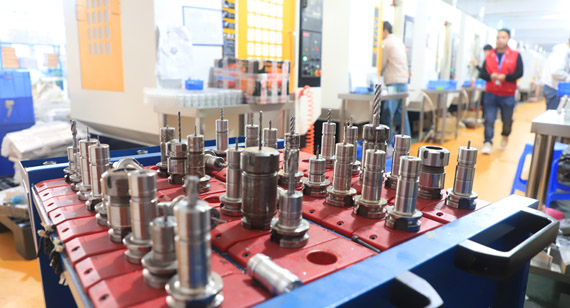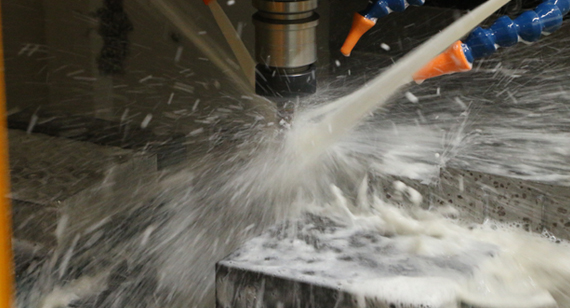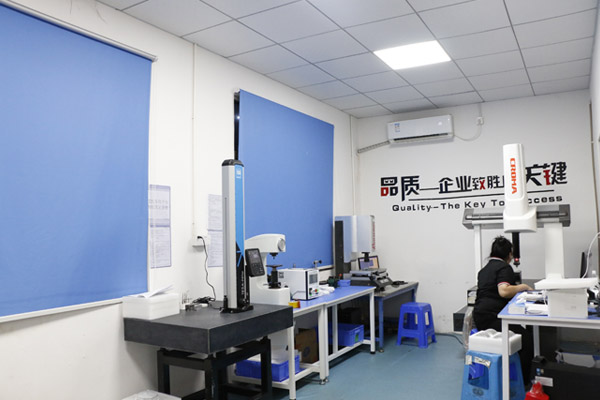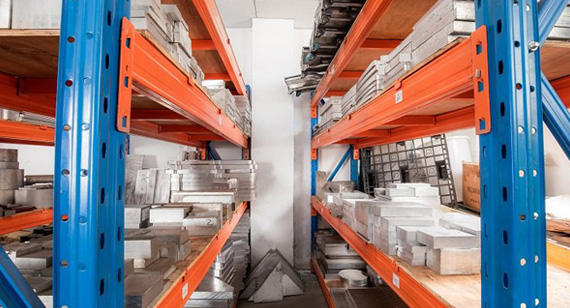15 years one-stop China custom CNC machining parts factory

Hey there I’m VMT Sam!
With 25 years of CNC machining experience we are committed to helping clients overcome 10000 complex part-processing challenges all to contribute to a better life through intelligent manufacturing. Contact us now
 237 |
Published by VMT at Nov 28 2023
237 |
Published by VMT at Nov 28 2023
Avoid work hardening and thermal deformation in stainless steel CNC machining
CNC machining of stainless steel faces challenges such as work hardening and thermal deformation. Taking a strategic approach can help mitigate these issues and ensure a successful machining process:
Work Hardening: Choose the appropriate cutting tool based on the type and grade of stainless steel you are using. Different alloys have different properties, such as corrosion resistance, strength and workability. Choose cutting tools with the appropriate geometry and coating designed specifically for stainless steel machining. Consider using tools with high-speed steel (HSS) or carbide inserts to resist wear and minimize work hardening.
Thermal distortion: Choose tools with efficient heat dissipation to reduce the effects of thermal distortion.

Cutting parameters:
Work hardening: Adjusting the feeds and speeds of a CNC machine based on tool and material specifications. Feed and speed are the two most important factors affecting the quality and efficiency of CNC machining. Feed refers to the rate at which the tool moves along the workpiece, while speed refers to the rate at which the tool rotates. Optimum feeds and speeds depend on the type and size of the tool, the depth and width of the cut, the hardness and toughness of the material, and the desired surface finish and accuracy. Adjust cutting speed and feed to balance material removal and heat generation. Choose higher cutting speeds to minimize dwell time and reduce the chance of work hardening.
Thermal distortion: Optimize cutting parameters to manage heat generation. Use a combination of higher cutting speeds and lower feed rates to reduce overall heat input.
Coolant usage:
Work Hardening: Use adequate coolant and lubricant during CNC machining. Coolants and lubricants serve a variety of purposes, such as reducing heat, friction and wear, improving surface finish and precision, and preventing corrosion and rust. Coolants and lubricants can be applied in different ways, such as spraying, flooding, misting or dripping, depending on the type and amount of fluid and the configuration of the machine and tool. With stainless steel, you need to use coolants and lubricants that provide adequate cooling and lubrication and protect against oxidation and staining. Generally, water-soluble or synthetic fluids are preferred because they have better cooling properties and lower viscosities than oil-based fluids. Use adequate coolant to dissipate heat and prevent localized overheating, which can lead to work hardening.
Thermal distortion: Use high-lubricity coolants to reduce friction and control temperature during machining. Coolant is delivered through the tool to achieve efficient heat dissipation.

Toolpath strategy:
Work Hardening: Optimizing tool paths for CNC machining operations. A tool path is the sequence of motions a tool follows to create the desired shapes and features on a workpiece. Tool paths can affect the quality and efficiency of CNC machining, as well as tool life and wear. Maintain consistent cutting forces and reduce the potential for work hardening with adaptive toolpaths. Consider changing the cutting direction to evenly distribute wear.
Thermal Deformation: Implement efficient tool paths to minimize dwell time. Use trochoidal milling or high-efficiency milling techniques to reduce the effects of thermal deformation.
Preheat or anneal:
Work hardening: Preheating stainless steel materials before machining to reduce their hardness. Alternatively, consider annealing the material after roughing to soften it for subsequent finishing.
Thermal distortion: Preheating also helps control thermal stress and reduce the risk of distortion. Annealing can be performed after machining to eliminate internal stress.
Machine rigidity:
Work Hardening: Make sure the CNC machine is strong and properly calibrated. Stiffness minimizes vibration and prevents excessive tool deformation, thereby reducing the potential for work hardening.
Thermal deformation: Rigid machine structure helps maintain stability during processing and reduces the effects of thermal deformation.
Post-machining processing:
Work Hardening: Consider post-machining treatments such as stress relief or solution annealing to mitigate work hardening effects.
Thermal distortion: Post-machining treatments, such as stress relief or cryogenic treatment, can help minimize thermal stress and distortion.
Tool monitoring and inspection:
Monitor tool wear regularly and replace tools before excessive wear occurs to maintain consistent machining conditions and prevent work hardening.
Frequently monitored and measured CNC machining processes and final products. Monitoring and measurement can help you detect and correct any errors or deviations that may occur during machining, such as tool wear, tool breakage, tool deflection, surface roughness, dimensional accuracy or geometric tolerance checks to ensure the integrity of the machining process and identify Potential issues related to thermal deformation.
You can monitor and measure CNC machining processes and end products using a variety of methods and instruments, such as sensors, cameras, gauges, calipers, micrometers or coordinate measuring machines (CMM). Through monitoring and measurement, you can ensure that your CNC machining process runs smoothly and efficiently, and that the final product meets specifications and expectations.

Design fixtures to securely hold stainless steel workpieces to minimize vibration and movement during machining. A stable workpiece reduces the possibility of work hardening and thermal deformation. Use vibration-damping materials in fixture design.

Select stainless steel alloys with improved machinability, especially when work hardening is a significant issue. Some alloys are specially formulated to reduce the tendency to work harden during machining.

Continuous monitoring:
Implement a real-time monitoring system to track temperature changes during processing. Thermal imaging and sensors provide insight into heat distribution so cutting parameters can be adjusted if necessary.
Maintenance and cleaning
Maintain and clean CNC machines, tools and workpieces after CNC machining is complete. Maintenance and cleaning can help you extend the life and performance of your machines, tools and workpieces, and prevent any damage or contamination that could affect the quality or safety of your final CNC machined parts. You can use a variety of methods and products to maintain and clean CNC machines, tools, and workpieces, such as compressed air, brushes, rags, solvents, or protective coatings. Through maintenance and cleaning. Ensures CNC machines, cutting tools and workpieces are in good condition and ready for the next CNC machining project operation or application.
By implementing these strategies, CNC machining of stainless steel can be optimized to minimize work hardening and thermal distortion, resulting in accurate and high-quality CNC machined parts.
Ready To Start Your Next Project?
Get Instant Quote

Request a Free Quote
Send us a message if you have any questions or request a quote. We will get back to you ASAP!